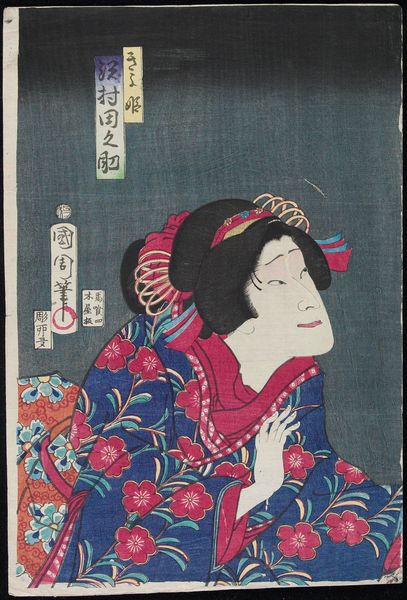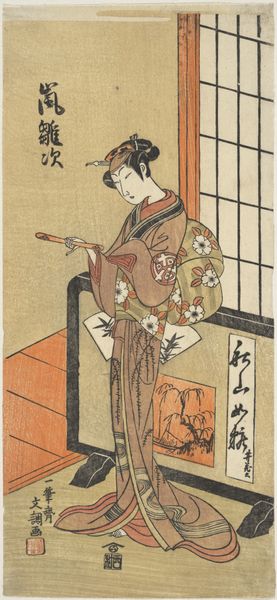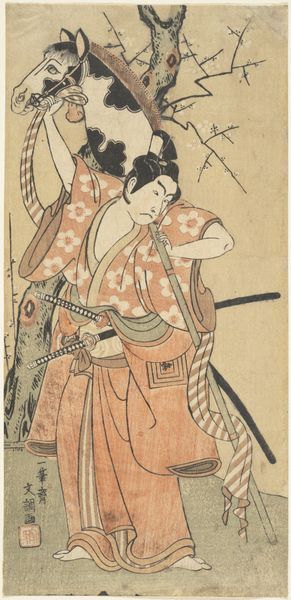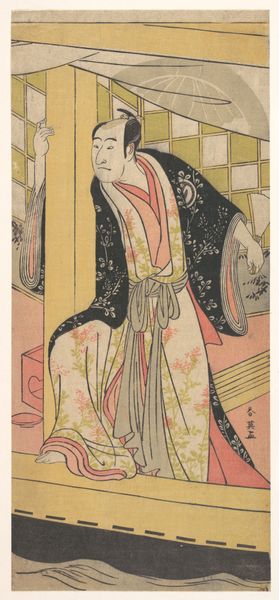
print, ink
#
ink painting
# print
#
asian-art
#
ukiyo-e
#
japan
#
figuration
#
ink
#
genre-painting
#
watercolor
Dimensions: 25 × 4 3/4 in.
Copyright: Public Domain
Curator: There’s something so immediately intimate about this print. The women seem caught in a moment, so totally absorbed by the task at hand that they're almost unaware of our gaze. Editor: You’re right. This is "Washing Clothes" by Chōkōsai Eishō, an Ukiyo-e print created sometime between 1780 and 1800, so, the late Edo period in Japan. Currently it lives here at the Art Institute of Chicago. What I find fascinating is the ordinariness of the scene presented as a snapshot. Curator: Snapshot is right. It’s that candid quality, isn’t it? You get the feeling you’re peering into a private, very ordinary, world, just hanging about doing daily life. I can almost feel the damp air and smell the soap. How about the visual dynamic between the women? It seems the upper woman is watching over, perhaps a caretaker? Editor: Well, in ukiyo-e prints, depictions of women, particularly in scenes of daily life, were very popular with the burgeoning merchant class, the print’s target consumer. These prints were relatively affordable, allowing people to connect with both romanticized and realistic visions of contemporary life. This composition suggests perhaps that they are indeed of differing social rank. It allows the male viewer to enter an intimate scene without causing a real disturbance. Curator: Hmm, that throws a different light on the intimate portrayal, doesn't it? Almost like the quiet hum of labor, domestic labor, transformed into a commodity to be observed. The details really speak volumes; even the soft hues of the ink painting bring a touch of grace to something quite mundane. It is subtle and elegant, perhaps as an intentional strategy. Editor: Absolutely. Eishō's expertise in line work, texture and delicate color choices adds to its aesthetic, but its availability and context reveals volumes of social-economic meaning too. This intersection—that’s where its power really lies. Curator: I see, yes. So much for my initial impression! It does make you think, doesn’t it? What we find beautiful or mundane today can hold so many layers when you unpack it with a bit of historical perspective. Editor: Exactly. It's never just about the surface of art. It is about peeling back its time capsule, as if you find new doors by dusting and looking further.
Comments
No comments
Be the first to comment and join the conversation on the ultimate creative platform.













